
 Blues/Jazz guitarist Robben Ford merges styles to redefine the term “fusion†music. His sound, delivery and conception are all his own – as unmistakable and personal as a fingerprint. He chose a deliberate reinterpretation of the unusual Fender Esprit Ultra as the basis for his signature instrument (the Fender Robben Ford Signature model), which reflects Robben’s discriminating and diverse as both a soloist and rhythm player.
Blues/Jazz guitarist Robben Ford merges styles to redefine the term “fusion†music. His sound, delivery and conception are all his own – as unmistakable and personal as a fingerprint. He chose a deliberate reinterpretation of the unusual Fender Esprit Ultra as the basis for his signature instrument (the Fender Robben Ford Signature model), which reflects Robben’s discriminating and diverse as both a soloist and rhythm player.
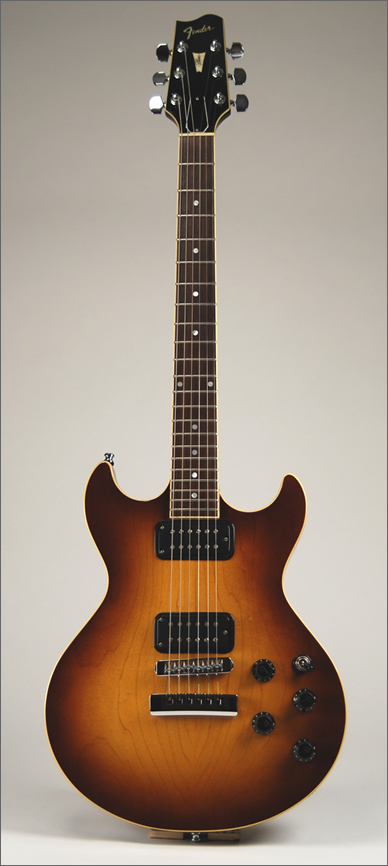 Designed in the mid-1980’s, the Esprit effectively reconciled the differences between a blues, jazz and rock guitar, making it ideal for Robben’s varied musical tangents. He was originally drawn to the smaller body size, double-cutaway comfort and remarkable playability of the Esprit as an alternative to the larger, honky-sounding semi-hollow-body he had been playing. Though the Esprit was discontinued by the late 1980’s, Robben remained an ardent user.
Designed in the mid-1980’s, the Esprit effectively reconciled the differences between a blues, jazz and rock guitar, making it ideal for Robben’s varied musical tangents. He was originally drawn to the smaller body size, double-cutaway comfort and remarkable playability of the Esprit as an alternative to the larger, honky-sounding semi-hollow-body he had been playing. Though the Esprit was discontinued by the late 1980’s, Robben remained an ardent user.
The History of the “Master Series” Â (by Gary Koehler) is as follows;
Approximately 25 years ago, Dan Smith had an idea. He conceptualized a solidbody guitar with routed chambers. These chambers would, in theory, provide a more resonant tonal characteristic. He also formulated and designed a basic shape for the guitar.
Then, in the early 1980s, Fender became interested in producing and marketing instruments which would be viewed as alternatives to those offered by Gibson. These guitars would not be copies, of course, but highly playable guitars with versatile electronics and other features previously unavailable on instruments manufactured by Fender. The company asked Smith to submit a concept, and what followed was an adventurous effort to produce a new line of guitars unique to the Fender’s catalog. The line was called the Master Series.
Two of Smith’s designs were solidified – the Flame and the Esprit (pronounced espree). Both featured alder bodies with routed tone chambers, maple tops, and set-in necks.
The Flame’s body is slightly larger than a Gibson Les Paul, and features two slightly offset cutaways, similar to Gibson’s SG. Two special-design humbucking pickups were developed via Schaller, as was a tailpiece with fine-tuners. The intention was to offer an electronically versatile alternative to the Gibson Les Paul.
The Esprit’s body is slightly larger than the Flame’s, and features two symmetrical cutaways. As with the Flame, two special-design Schaller humbuckers were employed in conjunction with the fine-tuning tailpiece. This instrument was intended as an alternative to the Gibson ES-335.
A third model was an archtop designed by the late James D’Aquisto. His design included some imaginative, versatile features and stands as a testament to D’Aquisto’s creativity as a luthier.Â
These three designs were marketed together as the Fender Master Series.
Once designs were approved, the company turned its attention to issues of manufacturing and production. Fender decided that, at that time, it did not possess the technology to build the instruments. The Japanese company Fujigen Gakki (which served as an Ibanez facility) was contracted by Fender to manufacture the line.
Fender ultimately decided to produce three models of both types. The suffixes Standard, Elite, and Ultra were added under the headings Flame and Esprit. Standards featured dot inlays and chrome tuners. The Elites featured diamond-flake inlays and pearloid-button tuners. And the Ultras had split-block shell inlays, ebony-button tuners and gold hardware. Finish options on the Standards were limited to black, autumn sunburst, and cherry sunburst. The Elite and Ultra were also available in white or pink frost, and candy red or candy green metallic burst.
Smith said Fender offered the Kahler tremolo bridge as an option on these guitars. He recalls Fender made the modification post-production, and relatively few were shipped.
He was unable to find records indicating quantities made, but estimated that between late 1983 and 1985, a few thousand were manufactured. In retrospect, Smith feels the guitars were successful in regard to quality and public perception. The line’s downfall was the sale and subsequent transitional period experienced by Fender. In 1986, Robben Ford was brought on as an endorser of the Esprit model, then Fender reworked the production concept and dubbed the guitar the Robben Ford signature model.
In its incarnation as the Robben Ford signature model, it has retained many of the Ultra’s significant features and deluxe appointments, as specified by Robben, including the Ebony fingerboard with fancy Mother-of-Pearl split-block inlays, Ebony tuning key pegs, multiple binding on the headstock, neck and body and gold-plated hardware. The solid Alder body with a carved Spruce top and built-in acoustical tone chambers is a clever variation on the classic solid-body construction theme of mahogany and maple and is a vital component in producing the rich and consistent sustaining Robben Ford solo guitar voice.
Another is the two-humbucker pickup configuration which yields both a mellow, neck-pickup jazz sound as well as a robust, bridge-pickup blues-rock tone. The coil-splitting switch provides interesting thinner and twangier single-coil timbres ideal for rootsy rock and roll, R&B and funky rhythm comping.
Current values of these rare and collectable guitars are in the £1500-2000 range.
![]()
![]()
![]() The Jackson Roswell Rhoads was a very rare, limited edition guitar made in 1997. It was a limited run of 123 guitars, and was a twist on the classic Jackson Randy Rhoads shape, with a UFO theme running through it.
The Jackson Roswell Rhoads was a very rare, limited edition guitar made in 1997. It was a limited run of 123 guitars, and was a twist on the classic Jackson Randy Rhoads shape, with a UFO theme running through it. The body, instead of being made from wood, was made of 6061-T6 aluminium, an aircraft-grade metal which was hand-carved and polished in the Jackson Custom Shop. The guitar featured a single humbucker and a fixed bridge.
The body, instead of being made from wood, was made of 6061-T6 aluminium, an aircraft-grade metal which was hand-carved and polished in the Jackson Custom Shop. The guitar featured a single humbucker and a fixed bridge.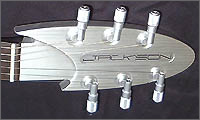
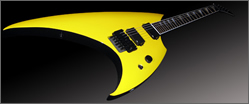 This is a newer model featuring a Floyd Rose tremolo and EMG pickups, for a price of around £500.
This is a newer model featuring a Floyd Rose tremolo and EMG pickups, for a price of around £500.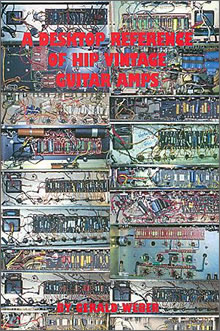
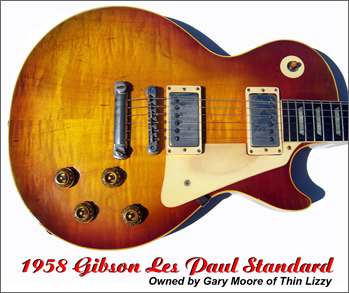
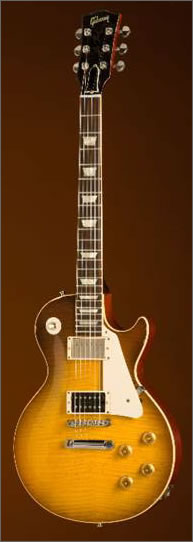

 Oiling leaves a nice satin finish and brings out the grain of the wood, while giving a reasonable amount of protection. I headed off to my local DIY warehouse and bought a large tin of Danish Oil for under a tenner, which will probably be enough to refinish every Westone Cutlass in existence! Applying it couldn’t be easier…tip some sparingly onto a clean duster and stroke it into the wood, keeping the coverage as even as possible. It dries in about 15-20 minutes and then you can keep adding layers (3 or 4) until a decent covering has been built up.
Oiling leaves a nice satin finish and brings out the grain of the wood, while giving a reasonable amount of protection. I headed off to my local DIY warehouse and bought a large tin of Danish Oil for under a tenner, which will probably be enough to refinish every Westone Cutlass in existence! Applying it couldn’t be easier…tip some sparingly onto a clean duster and stroke it into the wood, keeping the coverage as even as possible. It dries in about 15-20 minutes and then you can keep adding layers (3 or 4) until a decent covering has been built up.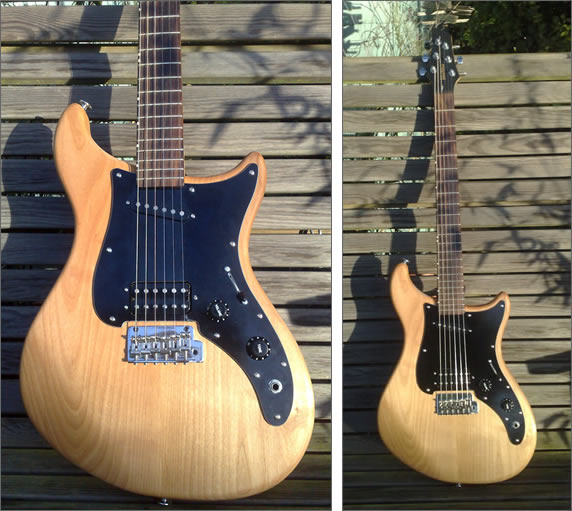


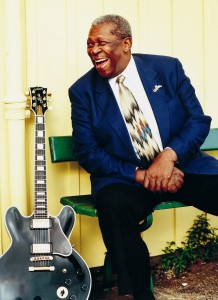 Being a huge fan of BB King of course I was. On the phone they told me it was an 80th Birthday Lucille model which I had never heard of! So I started doing research with anyone and everyone I knew that could help me out. I found out from Gibson, that 80 of them were created for BB King’s 80th Birthday in 2006 and that they sold new for almost $10,000.
Being a huge fan of BB King of course I was. On the phone they told me it was an 80th Birthday Lucille model which I had never heard of! So I started doing research with anyone and everyone I knew that could help me out. I found out from Gibson, that 80 of them were created for BB King’s 80th Birthday in 2006 and that they sold new for almost $10,000. When he was 9, he and his brother Brogan saved up to buy Guitar Hero.  At the time, Jack was mostly into pop like Michael Jackson and Pink, but playing along to tunes by the likes of Ozzy Osbourne, AC/DC and Aerosmith pushed him more toward rock.
By the time he was 10, Jack was ready for a real instrument.
"Guitar Hero sort of inspired me to play drums," said Jack, who takes lessons with teacher Tony Mowen at the Center for Creative Arts in Yorklyn. "When I started to play Guitar Hero, it made me listen to rock more. I like that a lot better now."
Jack's story is by no means unique. Despite fears the video games would drive kids away from taking up real guitars and drums and pianos, the opposite is proving true. Kids are taking up an instrument after playing one of the video games and catching the music bug.
Blake Carlisle, who teaches guitar basics at Earle Teat Music in Delmar, said most of the kids who come in for lessons were inspired by Guitar Hero or Rock Band.
When he was 9, he and his brother Brogan saved up to buy Guitar Hero. Â At the time, Jack was mostly into pop like Michael Jackson and Pink, but playing along to tunes by the likes of Ozzy Osbourne, AC/DC and Aerosmith pushed him more toward rock.
By the time he was 10, Jack was ready for a real instrument.
"Guitar Hero sort of inspired me to play drums," said Jack, who takes lessons with teacher Tony Mowen at the Center for Creative Arts in Yorklyn. "When I started to play Guitar Hero, it made me listen to rock more. I like that a lot better now."
Jack's story is by no means unique. Despite fears the video games would drive kids away from taking up real guitars and drums and pianos, the opposite is proving true. Kids are taking up an instrument after playing one of the video games and catching the music bug.
Blake Carlisle, who teaches guitar basics at Earle Teat Music in Delmar, said most of the kids who come in for lessons were inspired by Guitar Hero or Rock Band.

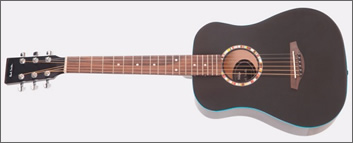

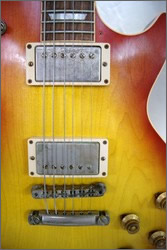 Gibson Guitars, long lauded by environmental groups as a pioneer in the use of sustainable wood products, is the first U.S. company to face prosecution under a new federal law banning trade in illegal wood.
Gibson Guitars, long lauded by environmental groups as a pioneer in the use of sustainable wood products, is the first U.S. company to face prosecution under a new federal law banning trade in illegal wood.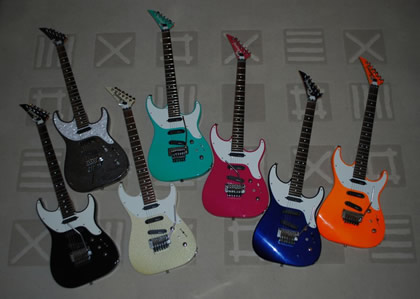
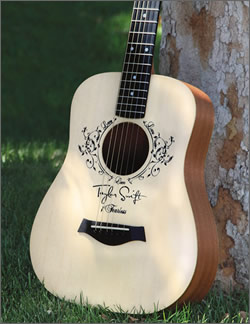 At three-quarters the size of a standard dreadnought, with a slim 1 11/16-inch neck and a comfortably compact shape, the guitar is just right for both the littlest player’s hands and anyone who likes to pick up and play on the go.
At three-quarters the size of a standard dreadnought, with a slim 1 11/16-inch neck and a comfortably compact shape, the guitar is just right for both the littlest player’s hands and anyone who likes to pick up and play on the go.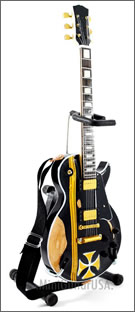
 As guitarists, most of us would love to have the financial means to acquire a dream collection of our favourite instruments.
As guitarists, most of us would love to have the financial means to acquire a dream collection of our favourite instruments.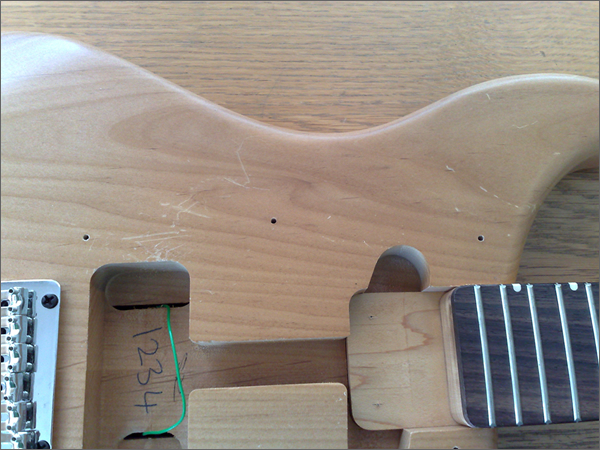
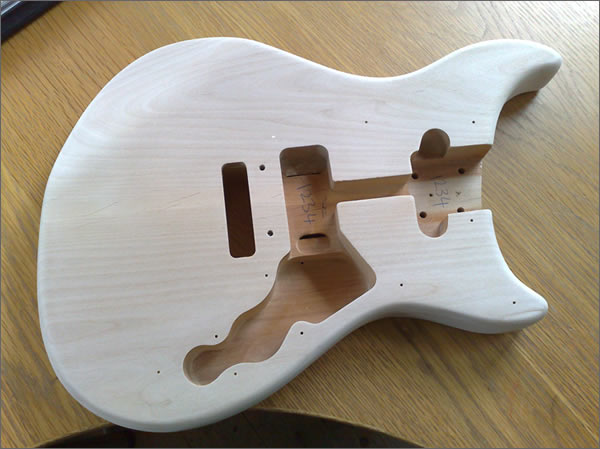
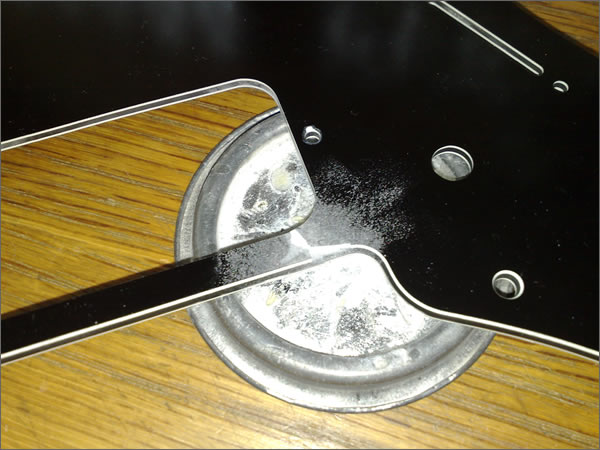 Once this had dried, I carefully sanded back the excess coloured the white microballoon area with a black felt tip pen. It’s not perfect, but it’s a solid repair and hardly noticeable now the guitar is back together.
Once this had dried, I carefully sanded back the excess coloured the white microballoon area with a black felt tip pen. It’s not perfect, but it’s a solid repair and hardly noticeable now the guitar is back together.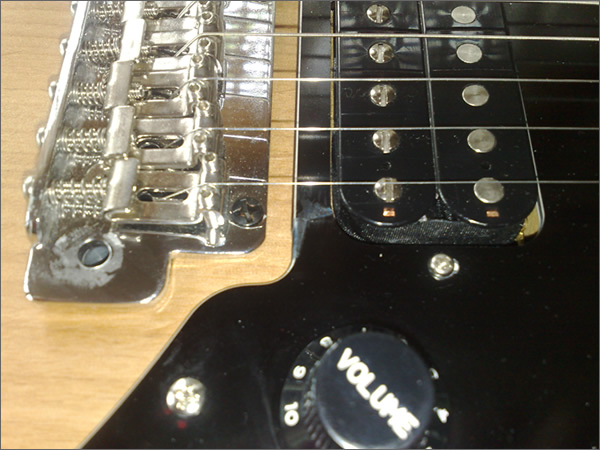
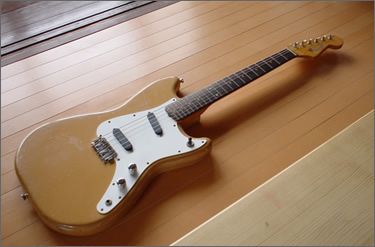
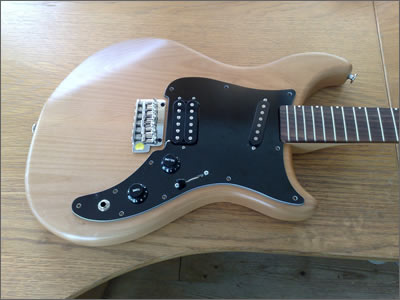
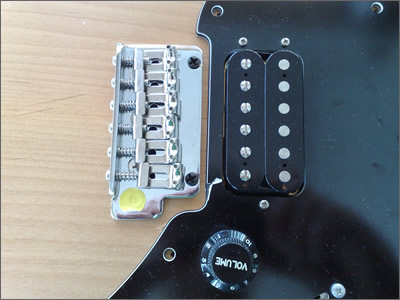
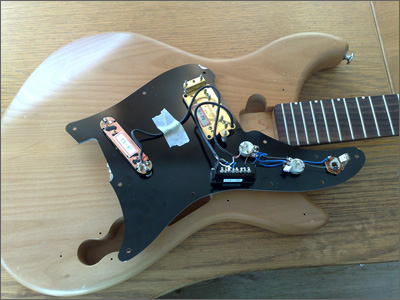
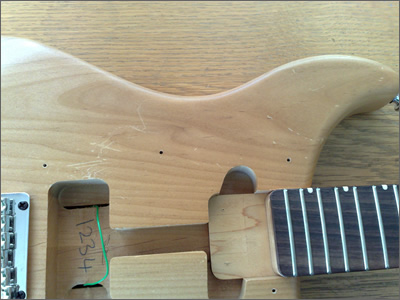
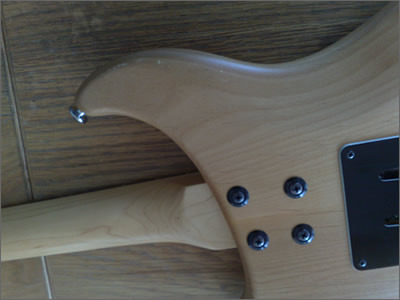
 Bill Wyman, the former bassist of the Rolling Stones, has claimed that Guitar Hero, Rock Band and other music games discourage children from learning real instruments.
Bill Wyman, the former bassist of the Rolling Stones, has claimed that Guitar Hero, Rock Band and other music games discourage children from learning real instruments. Included are a very cool looking Rickenbacker 6/12 string double neck and a unique 26 year old Ibanez prototype of a potential Lukather signature model that never made it into production. Bidding starts at $18,000 so start raiding your piggy banks!
Included are a very cool looking Rickenbacker 6/12 string double neck and a unique 26 year old Ibanez prototype of a potential Lukather signature model that never made it into production. Bidding starts at $18,000 so start raiding your piggy banks!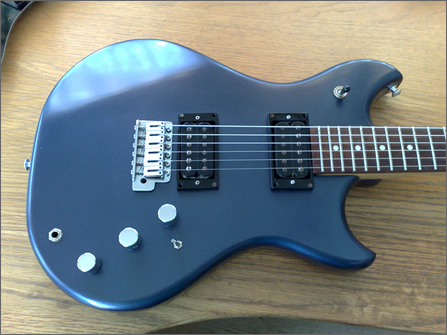

 Lightweight and comfortable, the Wilshire has excellent resonance and natural acoustic tone – even unplugged! Featuring Epiphone’s LockTone tune-o-matic/stopbar combination, the transfer of string vibration is improved even more giving this guitar excellent sustain and clarity. But here’s what separates the Wilshire from the SG. Most early Epiphone guitars including the Wilshire were equipped with mini-humbucking pickups and Epiphone carries on this tradition.
Lightweight and comfortable, the Wilshire has excellent resonance and natural acoustic tone – even unplugged! Featuring Epiphone’s LockTone tune-o-matic/stopbar combination, the transfer of string vibration is improved even more giving this guitar excellent sustain and clarity. But here’s what separates the Wilshire from the SG. Most early Epiphone guitars including the Wilshire were equipped with mini-humbucking pickups and Epiphone carries on this tradition.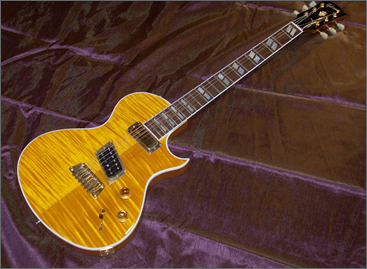 The
The  We have put together a free ebook for all our visitors as a thankyou for your support over the last few months.
We have put together a free ebook for all our visitors as a thankyou for your support over the last few months.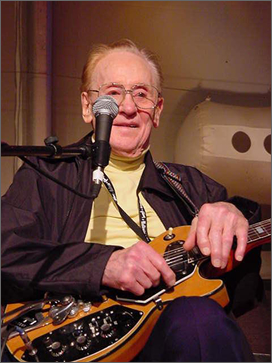 Mr Paul died from complications of pneumonia in New York, according to Gibson, the firm that sold his guitars.
Mr Paul died from complications of pneumonia in New York, according to Gibson, the firm that sold his guitars. The Ibanez Musician was born out of the Japanese copy boom of the 1970s, which also helped spawn the
The Ibanez Musician was born out of the Japanese copy boom of the 1970s, which also helped spawn the 
 “I turned around and actually saw the van come through the window of the store,†Pittillo said. “It was slow motion.â€
“I turned around and actually saw the van come through the window of the store,†Pittillo said. “It was slow motion.â€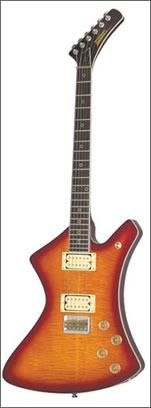 Shaped like a truncated Gibson Explorer with a chunky slanted headstock, the high quality Stage series found homes with a fair number of rock guitarists in the early 1980’s. They were produced in Japan in the highly regarded Matsumoku factory, which also built guitars for Ibanez, Westone, and a host of other manufacturers.
Shaped like a truncated Gibson Explorer with a chunky slanted headstock, the high quality Stage series found homes with a fair number of rock guitarists in the early 1980’s. They were produced in Japan in the highly regarded Matsumoku factory, which also built guitars for Ibanez, Westone, and a host of other manufacturers.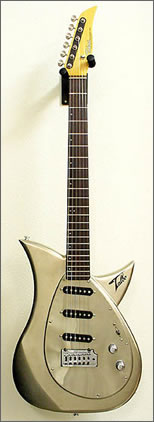 It was very unusual in that the body was not made of wood, as you might expect, but aluminium instead. As such the name was actually an acronym for Tokai ALuminium BOdy. The benefits of using aluminium were sustainability- no trees get chopped down to make enough aluminium for a Talbo body, and a different sound.
It was very unusual in that the body was not made of wood, as you might expect, but aluminium instead. As such the name was actually an acronym for Tokai ALuminium BOdy. The benefits of using aluminium were sustainability- no trees get chopped down to make enough aluminium for a Talbo body, and a different sound. He’s also received thousands of emails and a flood of friend requests on Facebook.
He’s also received thousands of emails and a flood of friend requests on Facebook.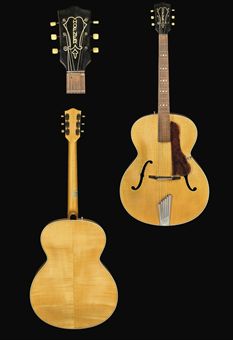 There has been some written speculation in the past that this Hofner Senator may be the very one that former Quarry Man Ken Brown owned, however this seems unfeasible when the provenance of this guitar is analysed.
There has been some written speculation in the past that this Hofner Senator may be the very one that former Quarry Man Ken Brown owned, however this seems unfeasible when the provenance of this guitar is analysed.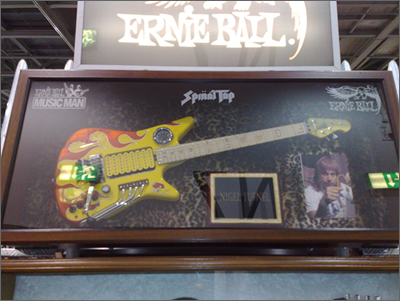
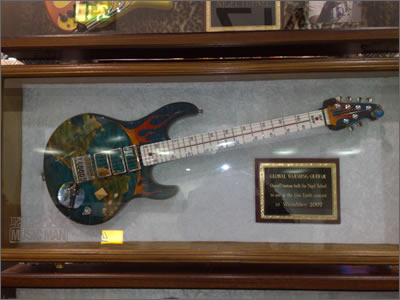
 The Parts Drawer is a vintage guitar parts service, dealing primarily with Gibson and Fender (about 80% of their stock) but also catering for other makes too.
The Parts Drawer is a vintage guitar parts service, dealing primarily with Gibson and Fender (about 80% of their stock) but also catering for other makes too.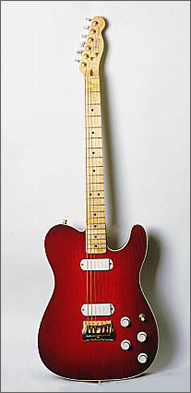 The Elite concept was an ambitious project to combine tradition with modern (at the time) technologies with more user-friendly hardware, upgraded electronics and better neck adjustment. The intention was to produce an upgraded version of a classic with a more modern look and feel, and to hopefully entice some Gibson players into the Fender family.
The Elite concept was an ambitious project to combine tradition with modern (at the time) technologies with more user-friendly hardware, upgraded electronics and better neck adjustment. The intention was to produce an upgraded version of a classic with a more modern look and feel, and to hopefully entice some Gibson players into the Fender family.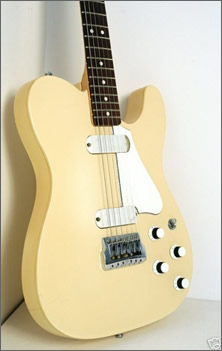
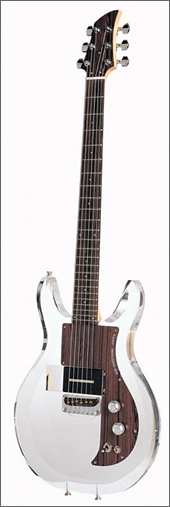 Ampeg then asked Armstrong to design some guitars and basses for them to market. The design he came up with resides somewhere between a Strat and an SG, but with a surreal twist: the body was made entirely of a solid slab of Plexiglas (the trade name for a type of rigid, clear plastic) and the scratchplate of a piece of the wood-grain replica pattern Formica, popular on furniture in the 1960s and 70s.
Ampeg then asked Armstrong to design some guitars and basses for them to market. The design he came up with resides somewhere between a Strat and an SG, but with a surreal twist: the body was made entirely of a solid slab of Plexiglas (the trade name for a type of rigid, clear plastic) and the scratchplate of a piece of the wood-grain replica pattern Formica, popular on furniture in the 1960s and 70s.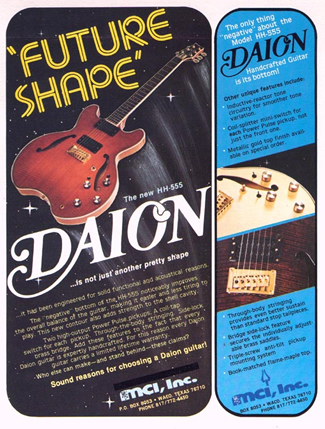 One of the better known (and I use that term loosely) Daion models was the semi-solid ES-335-alike 555 Headhunter, which featured an innovative third cutaway on the bottom of the body.
One of the better known (and I use that term loosely) Daion models was the semi-solid ES-335-alike 555 Headhunter, which featured an innovative third cutaway on the bottom of the body.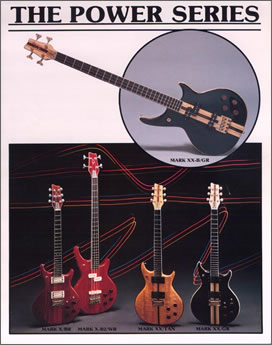
 Montrose, a San Franciscan, hasn’t seen his guitar (which he bought from J. Geils) since that night on Oct. 10, 1972 when he played Dudley, Mass. with the Edgar Winter Band … until now. The San Francisco musician — who has played with Herbie Hancock, Van Morrison and others — claims that after 37 years of scouring and thousands of dollars spent on private detectives, his guitar has turned up in the possession of British musician and guitar collector Gary Moore — and, last week,Â
Montrose, a San Franciscan, hasn’t seen his guitar (which he bought from J. Geils) since that night on Oct. 10, 1972 when he played Dudley, Mass. with the Edgar Winter Band … until now. The San Francisco musician — who has played with Herbie Hancock, Van Morrison and others — claims that after 37 years of scouring and thousands of dollars spent on private detectives, his guitar has turned up in the possession of British musician and guitar collector Gary Moore — and, last week,  Designed in the mid-1980’s, the Esprit effectively reconciled the differences between a blues, jazz and rock guitar, making it ideal for Robben’s varied musical tangents. He was originally drawn to the smaller body size, double-cutaway comfort and remarkable playability of the Esprit as an alternative to the larger, honky-sounding semi-hollow-body he had been playing. Though the Esprit was discontinued by the late 1980’s, Robben remained an ardent user.
Designed in the mid-1980’s, the Esprit effectively reconciled the differences between a blues, jazz and rock guitar, making it ideal for Robben’s varied musical tangents. He was originally drawn to the smaller body size, double-cutaway comfort and remarkable playability of the Esprit as an alternative to the larger, honky-sounding semi-hollow-body he had been playing. Though the Esprit was discontinued by the late 1980’s, Robben remained an ardent user.